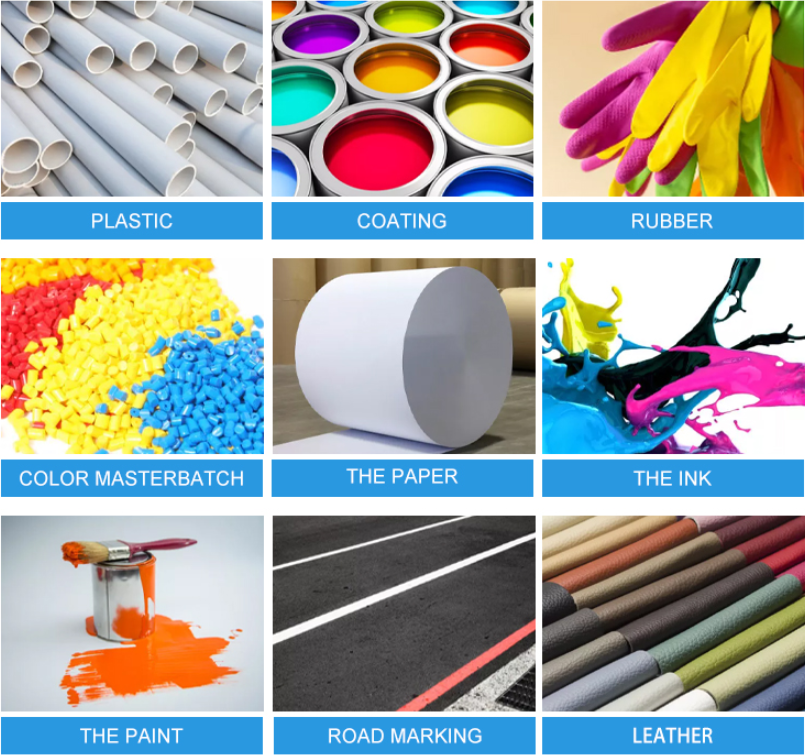
ធ្នូ . 09, 2024 18:47 Back to list
Applications and Benefits of Lithopone in Plastic Industry
Lithopone for Plastics An Overview
Lithopone is a white pigment composed of a mixture of barium sulfate (BaSO4) and zinc sulfide (ZnS), and it has been used in various applications since its discovery in the late 19th century. As industries evolve and the demand for sustainable and environmentally friendly materials increases, the use of lithopone in the plastics sector has gained attention due to its unique properties and advantages. This article explores the significance of lithopone for plastic applications, its benefits, and its impact on the industry.
Properties and Composition
Lithopone is typically produced by coprecipitating barium sulfide with zinc sulfate, followed by oxidation to produce zinc sulfide. The resulting pigment exhibits excellent whiteness, opacity, and durability, making it an ideal candidate for various plastic applications. Its high refractive index allows for effective light scattering, which enhances the opaqueness of plastics, thus masking undesired colors and providing a uniform appearance.
Moreover, lithopone is characterized by its non-toxic nature, which is a significant advantage over other pigments that may pose health risks or environmental concerns. This aligns with global trends towards safety and sustainability, making lithopone an attractive option for manufacturers striving to meet regulatory demands and consumer expectations for safer products.
Applications in Plastics
Lithopone is primarily used as a pigment in plastics, particularly in the production of polyvinyl chloride (PVC), polyethylene, and polypropylene. Its excellent dispersibility in these materials enables uniform distribution, leading to consistent color and performance across batches. In PVC applications, lithopone improves the material's opacity and brightness, enhancing the visual appeal of end products such as pipes, siding, and flooring.
Furthermore, lithopone provides UV protection in plastics, which is essential in applications exposed to sunlight. The pigment can act as a stabilizer, preventing degradation and discoloration caused by ultraviolet light. This property is particularly valuable for outdoor products, including garden furniture, automotive parts, and construction materials, which need to withstand harsh environmental conditions.
lithopone for plastic

Environmental Considerations
In recent years, the plastics industry has faced significant scrutiny regarding its environmental impact. Many manufacturers are actively seeking alternatives to traditional pigments that may have adverse effects on health and the environment. Lithopone, with its non-toxic characteristics and potential for biodegradability, presents a viable solution.
The shift towards sustainable practices has prompted research into the lifecycle analysis of materials used in plastics. Lithopone’s relatively low environmental footprint, when compared to synthetic organic pigments, positions it as a favorable choice for eco-conscious manufacturers. By integrating lithopone into their formulations, companies can reduce harmful emissions during production and enhance the recyclability of their plastic products.
Challenges and Future Prospects
Despite the advantages of lithopone, there are challenges that need to be addressed. One of the main issues is the price competitiveness with other widely used pigments, such as titanium dioxide. Natural mineral pigments like lithopone generally have a higher production cost, which can deter manufacturers from adopting it.
However, as the demand for safer and more sustainable products continues to rise, the potential for lithopone in the plastics industry is promising. Innovation in production techniques and improved formulations could help lower costs and enhance the performance of lithopone, making it a more attractive option for plastic manufacturers.
Conclusion
In conclusion, lithopone stands out as a valuable pigment for plastic applications due to its excellent properties, non-toxic nature, and potential for environmental sustainability. With growing awareness and demand for sustainable materials, lithopone could play a significant role in shaping the future of the plastics industry. As technological advancements and market trends evolve, lithopone may emerge as a key player in creating safer, more efficient, and environmentally friendly plastic products.
-
High Quality China Black Iron Oxide Powder Supplier Competitive Price & Fast Delivery
NewsJul.08,2025
-
High Quality Titanium Dioxide Used in Rubber – Trusted Supplier & Factory Price
NewsJul.08,2025
-
High Purity Barium Sulfate Particle Size - Wholesale Manufacturer from China
NewsJul.07,2025
-
Premium Titanium Dioxide Lomon R-996 Supplier – Quality & Wholesale Price from China
NewsJul.07,2025
-
Top Titanium Manufacturers in China - Quality Titanium Dioxide Supplier & Production Line Solutions
NewsJul.06,2025
-
OEM Titanium White Supplier & Factory – High Purity, Consistent Quality for Industrial Use
NewsJul.06,2025
